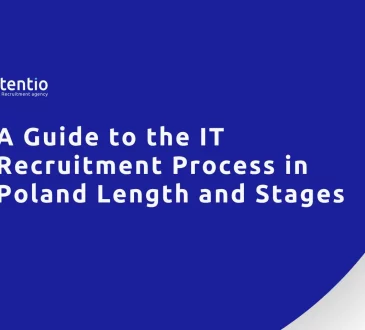How Cloud Inventory® Helps Drive Innovation with Cloud-Based Inventory Management in a Post-Pandemic World

Listen to the full podcast on Cloud Inventory’s website: https://www.cloudinventory.com/podcasts/chris-horsefield-podcast-cloud-based-inventory-management
Full Transcription below:
Welcome to Enterprise Radio, the signature show of the Enterprise Podcast Network, featuring some of the most prominent business professionals in the world today. And now your host, Eric Dye.
Dye: This is Eric Dye. And once again, welcome to Enterprise Radio, part of EPN, the Enterprise Podcast Network. Today we’re speaking with Mr. Chris Horsefield, the Chief Technology Officer for Cloud Inventory®, to learn more about their flagship product and how it’s providing real time inventory visibility at all points in the supply chain. As a technology and supply chain leader, Horsefield is here to explain how the pandemic pressured supply chains, unlike ever before, and how this team has continued to evolve products to meet today’s most complicated business challenges.
Mr. Horsefield, thanks for joining us here today on Enterprise Radio.
Horsefield: Yeah, thank you for having me, Eric.
Dye: And you’re certainly more than welcome. Our pleasure. Looking forward to learning a few things from you today. So if you would tell us about the advantages of using a cloud-based approach to inventory management over paper-based approaches. Let’s start there.
Horsefield: Well, Eric in plain terms, paper isn’t reliable. In many circumstances, processes that are managed by paper cause delay and are often missing or incomplete. You can also not drive behavior based on paper. Those things only happen after the paper process is completed. Another disadvantage of paper is it gets lost, damaged, or can sometimes be illegible.
With today’s demands, the Cloud has always been available. The data is immutable, and transaction logs are being kept throughout the process, which helps give visibility. In addition, Cloud Inventory applications can render native languages, which is becoming more of a demand from our global customers. The main advantage is accuracy, reliability, and the quick adoption of existing or new processes. In terms of GCP products that are core to this role and the related Google Cloud certification, I would say that a few really stand out: DataFlow, DataProc, BigTable, and BigQuery.
Dye: Many strong points made there. That certainly is helpful, and a great place to kick things off here today. Now, how does Cloud Inventory help companies generate revenue through inventory management? Get into some of those details.
Horsefield: Oftentimes, people think of revenue as bottom-line sales over costs, but it’s more than just that. Revenue is inventory that’s sitting idle. Revenue is human capital, working or not doing anything. In recent events, it tells us that change is inevitable. So sources of revenue have to change as well.
Cloud Inventory increases the efficiency and inventory assets, to move inside and outside of the four walls. It also gives companies the visibility to make data-driven decisions in real-time. By making more efficient inventory turns and understanding how the product can move through a process, companies can choose to add or remove new lines, which is a demand that is often happening in today’s world.
Having control without boundaries and control over that revenue and how it is generated within the organization free of constraints is where Cloud Inventory really helps our customers.
Dye: Now, let’s look at challenges for a moment. What are some challenges that can prevent a business from optimizing its inventory? And how does Cloud Inventory address those challenges? I’d like to hear your input on that.
Horsefield: Let’s say for example, that an organization is attempting to manage everything. They have disparate systems that they’re managing manually. In most cases, that data can be immediately out of date. You might often be looking at a spreadsheet to figure out if you need to move something faster.
Where Cloud Inventory bridges that gap is you have real-time information on the state, location, and authenticity of inventory, which allows our customers to optimize their holdings.
Cloud Inventory is seamless and allows you to track ongoing things coming in and out of your business. You can also use Cloud Inventory to help forecast and plan for costly disruptions in the supply chain.
Dye: Certainly do appreciate your visit with us here today. Quite interesting, and certainly see the advantages already. Today, we’re joined by Chris Horsefield, the Chief Technology Officer for Cloud Inventory, a company that empowers organizations with real time inventory visibility at all points in the supply chain from the warehouse to the field. And he’s joined us here today on Enterprise Radio, a part of EPN, the Enterprise Podcast Network.
Now, Mr. Horsefield, what do you think makes Cloud Inventory unique as a provider of inventory management solutions?
Horsefield: Well, historically, process and software have come a long way in the last decade. There are a lot of solutions out there that can count and track things and provide reporting. But what makes Cloud Inventory different is that it brings visibility of all facets of an organization into one data view in a pool. It’s not just the warehouse, it’s inventory in the wild that might be on trucks, inlay yards, that has a real financial impact to the business. So yes, Cloud Inventory can do warehousing well, as well as field inventory and manufacturing in one suite of tools.
The other great thing about Cloud Inventory is it’s a low code platform that allows customers to make business changes seamlessly. All of these interdependent systems are brought together for complete visibility.
Dye: Now, Chris, as the CTO of a leader in the industry, where do you see the most room for innovation in inventory management? Touch on that if you would.
Horsefield: We’re seeing huge growth in warehouse robotic automation, AI, and machine learning. I think over time, those cost barriers will come down with more mainstream innovation.
What I have seen is more affordable solutions at this time, or advancing stock replenishment and forecasting for exceptions, moving towards employees no longer needing to search and pick and keep up with demand for deliveries. Also, last-mile innovation is becoming more of a mainstream capability with mobile adapters and real-time photon counting.
Dye: Another question for you in regards to the pandemic. The COVID-19 pandemic has had a huge impact on all aspects of business across the board. How do you think inventory management, in particular, has been affected? And do you think that the pandemic has led businesses to reevaluate their approach to inventory in any important ways? I’d like to hear your input on that as well.
Horsefield: Yes, I believe that COVID-19 has changed everything. Probably for the first time in a while, businesses have had to confront challenges with transportation, labor, with stock, and most are unprepared to deal with it. Without visibility or some type of business and forced delivery times, crucial delivery dates get figured out the hard way.
With Cloud Inventory, we’ve stopped all of that disruption. People that were early adopters of the cloud didn’t feel the pain as much as those that are still counting on paper types of solutions that you’d mentioned previously.
Our customers are able to proactively and less reactively change the market conditions with our technology.
Dye: I certainly do appreciate your input on that. Most helpful. Now, lastly, as we conclude, a company operating with legacy ERP systems may stand to benefit from updating or implementing new inventory management solutions, but hesitate because they don’t want to engage in costly or time-consuming overhauls of a system that is already integrated with its operations across the business. Is there a cost-effective approach for this type of company? And how does Cloud Inventory work with legacy systems? Let’s wrap things up with that today.
Horsefield: Yes, there is. I know firsthand that change can be scary for larger organizations. It might be the number one lesson for businesses in a post-pandemic world. We spend a lot of time and money creating interwoven networks and systems to learn only that we have to expand for rapid change in the acceleration of different types of systems.
Cloud Inventory augments those systems and provides gap protection for lack of capability. It’s a virtually seamless integration that is more cost-effective than native ERPs. The platform also allows customers to add mobility solutions without replacing your existing ERP.
Dye: Mr. Horsefield, really appreciate your time and for joining us here today on behalf of Cloud Inventory, and really do appreciate what you offer in this space as well. I’m sure listeners definitely want to get more information online on Cloud Inventory and how they could be in touch. Where’s the best place online to do so?
Horsefield: Well, thanks, Eric. Yeah, you can find us at cloudinventory.com. There’s a lot of great information out there. And look forward to talking to you again.
Dye: And that certainly sounds like a plan. Again, folks, for more information, visit cloudinventory.com. Mr. Horsefield, all the best, and thanks for joining us here today on Enterprise Radio.
Horsefield: Thank you, Eric. Have a great day.
Dye: And you as well.
We’ve been speaking with Mr. Chris Horsefield, the Chief Technology Officer for Cloud Inventory, a company that empowers organizations with real-time inventory visibility at all points in the supply chain, from the warehouse to the field. And for all the information you need, visit cloudinventory.com.
This is Eric Dye, and you’ve been listening to Enterprise Radio a part of EPN, the Enterprise Podcast Network. Tune in to our live location as we are streaming live 24/7 around the world at epodcastnetwork.com/live. You can also find our live stream on iTunes Radio and TuneIn Radio, as well as the TuneIn radio app for your listening convenience.
As always, we thank you for your support and for tuning in.
Thanks for listening to Enterprise Radio. To subscribe to more of our programming, visit epodcastnetwork.com and listen to the full interview here
For more visit the article on this website.





